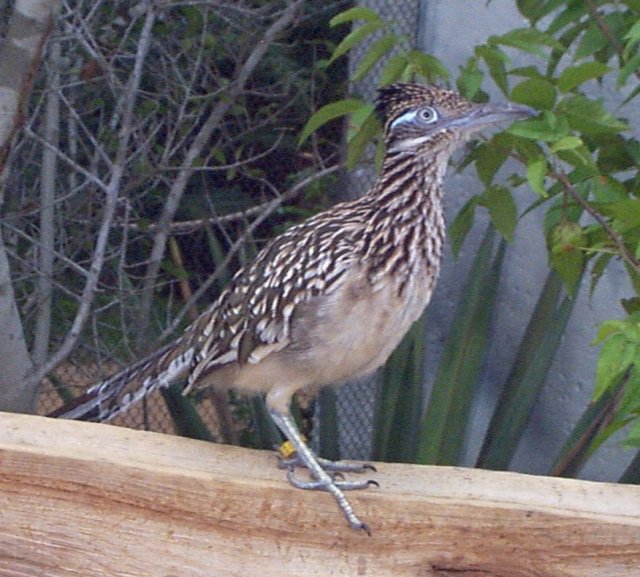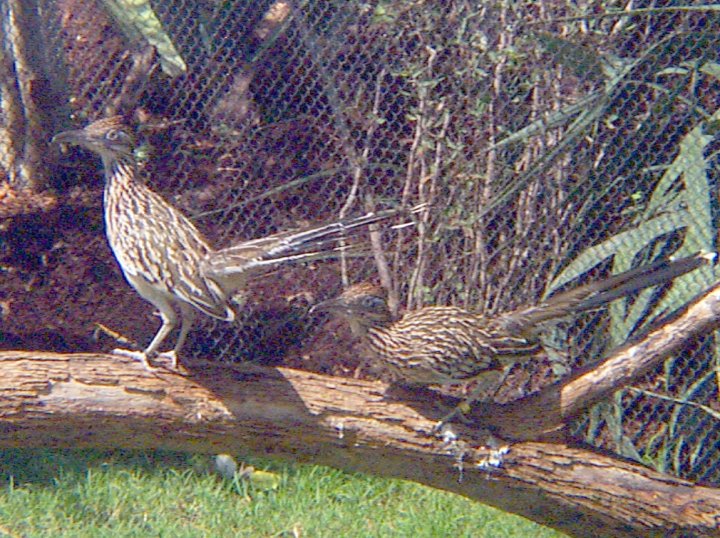Geococcyx californianus

ROADRUNNER
Geococcyx californianus

 |
Name: Roadrunner |
| Scientific name: Geococcyx californianus | |
| Range: North America,Chaparral, desert scrub, and other arid brush in the west and southwestern United States. | |
| Habitat: The Roadrunner inhabits open, flat or rolling terrain with scattered cover of dry brush, chaparral or other desert scrub. | |
| Status: Not threatened | |
| Diet in the wild: insects, crickets, grasshoppers,
caterpillars, ants
beetles, mice,lizards, snakes, |
|
| Diet in the zoo: mice,bees,insects | |
| Location in the zoo: Texas Wild! ( Brush Country) |
Physical description:
|
| General information:
The legendary Roadrunner, as we all know him from the WB cartoons is very popular for its distinguishing appearance. He is a large, black and white, blotchy ground bird. A fearless snake hunter who eats rattlesnakes and storms across the American deserts. The Roadrunner has very strong feet, characteristic head crest, and white-tipped tail with oversized bill. |
| Special anatomical,
physiological or behavioral adaptations: When
the Roadrunner senses danger or is traveling downhill, it flies, revealing
short, rounded wings with a white crescent. But it cannot keep its large
body airborne for more than a few seconds, and so prefers walking or
running (up to 17 miles per hour) usually with a clownish gait.
|
| Comments about the roadrunners of the Fort Worth Zoo:
There are 3 roadrunners at Texas Wild, 2 females and 1 male.  |
|
Personal Observations: Roadrunners do seem to spend most of their time running on the ground. They are very friendly and curious birds(do not be surprised if they come to you while you are watching them). They are not afraid to run in front of you and observe you with caution. They also make a lot of noise. Their tails the biggest parts of their bodies and they are positioned in an upward angle which is not very aero dynamical ( which may be one more reason why they do not fly). |
| Source Materials and Related Links:
Sources Links |
 |
 Boris
Sestan Boris
Sestan
Send E-mail to
|